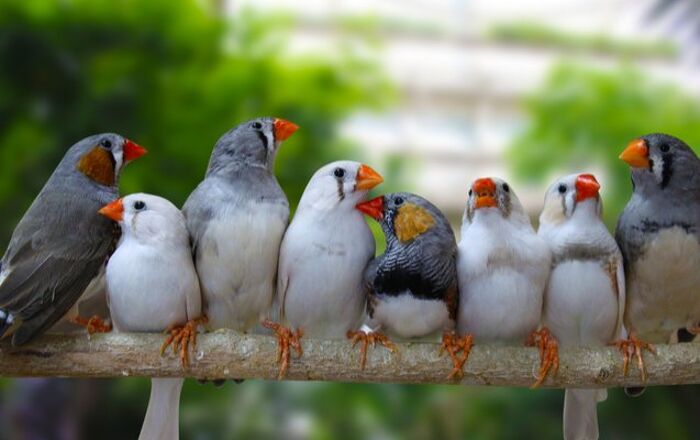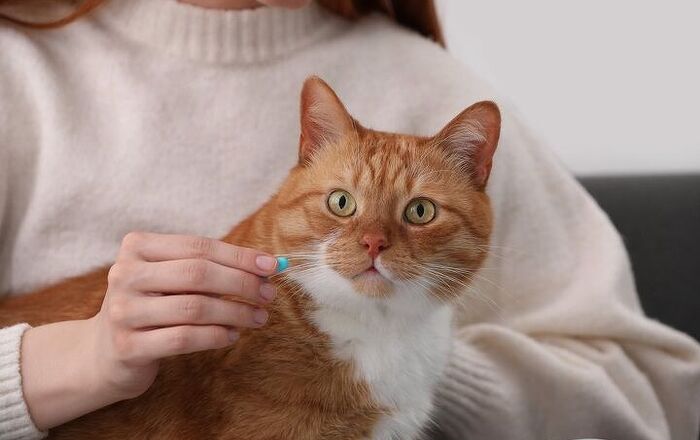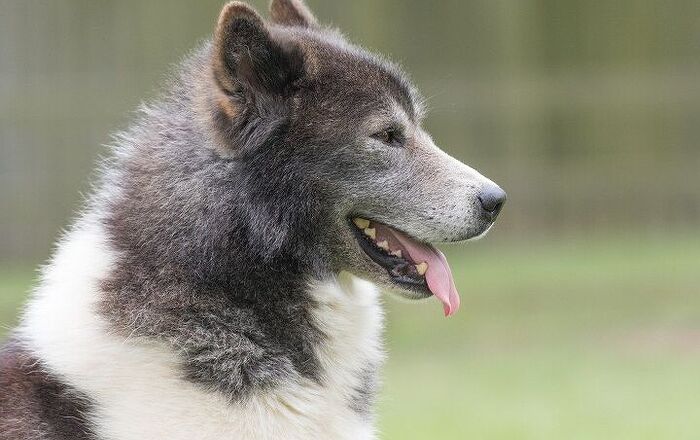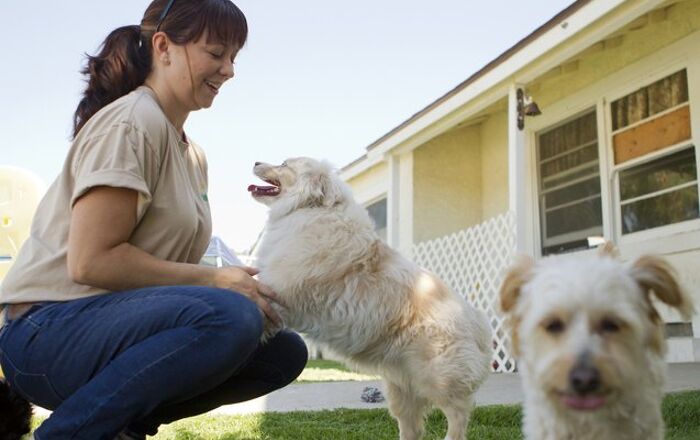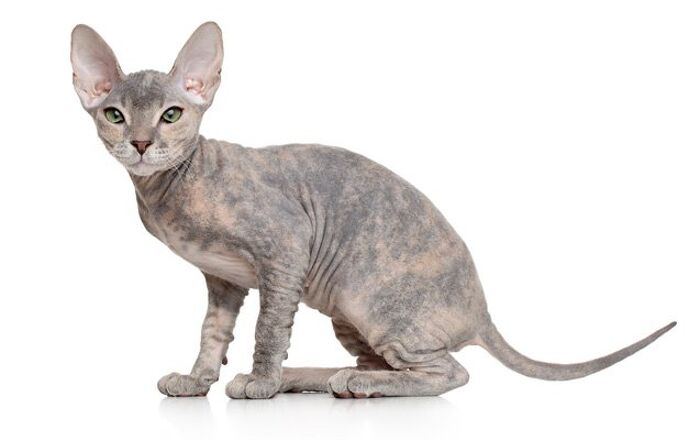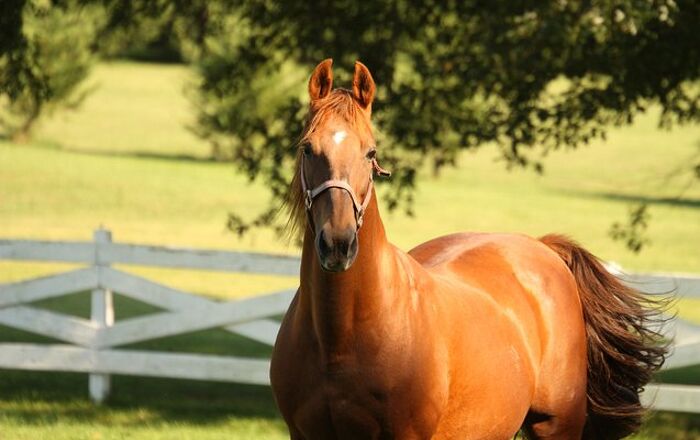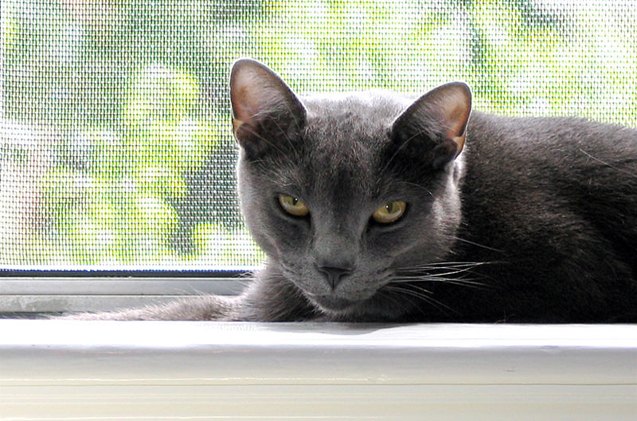
Russian Blue Breed History
The Russian Blue is believed to have originated in the port of Arkhangelsk in Russia. These cats were a so-called landrace or a naturally occurring breed. Naturally, people quickly fell in love with this cat’s regal looks and unique coloring, so it wasn’t long before they started breeding them. In the beginning, the Russian Blue could only be found in Russia (hence the name), but it caught the eye of enthusiasts from other countries. The Russian Blue Cat was brought by sailors from the Archangel Isles to England and Northern Europe in the 1860s. It was there where the breed was first shown outside of its native country- in the Crystal Palace in 1875. The breed was enrolled in competition with other blue-haired breeds and it wasn’t given its own class until a few decades later.
The Russian Blue Cat was given official breed status in 1912. After World War II, this breed was further developed in Russia and Scandinavia. Because of the breed’s scarcity before and after this time, the Russian Blue was bred with the Siamese cat. The Russian Blues seen in America today are a result of combining the bloodlines of both the Scandinavian and English Russian Blues, and as a result, the Siamese traits have been largely bred out. Today, the Russian Blue is a popular and common cat breed, despite being on the verge of dying out after the two world wars ended. All major cat registries and organizations recognize this breed and it is one of the most treasured pet cat breeds in the world.
The Russian Blue Cat is good with children and other pets, and is generally gentle, quiet and shy in nature.
Breed Traits
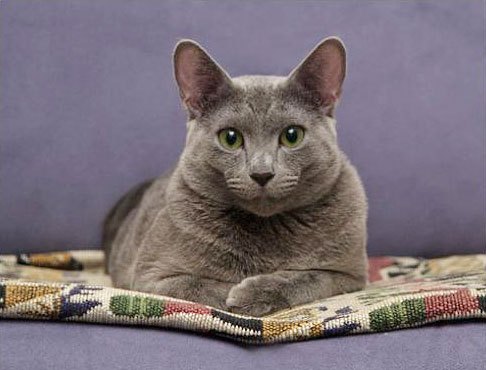
The Russian Blue Cat is good with children and other pets, and is generally gentle, quiet and shy in nature. This breed is intuitive to its owners’ moods and will actively seek affection, making it a wonderful cuddle buddy. Despite their sweet temperament, though, these cats are somewhat independent and reserved towards strangers. They might be all about ear scratches and purring when they’re with their close family, but when guests come over, your cuddly cat will likely hide out and wait until they are gone.
Even though they were once interbred with the talkative Siamese, these lovely cats are far from vocal today. They won’t be meowing at your for every little thing or express their displeasure with loud sounds. Their quiet disposition is just one of the many things that makes them perfect for prospective pet pawrents who want an easy-going cat. They are not clingy as some breeds, Ragdolls for instance, and their desire for affection and attention won’t be overwhelming or demanding. You won’t have to worry that your kitty will grow depressed while you’re at work- as long as their needs are met.
The Russian Blue is an intelligent, curious cat that will get bored. Instead of finding out that when your pet starts running at super speed at 3 AM or starts using your sofa as a scratch pad, provide proper stimulation and enrichment on time. Interactive cat toys, such as feather teasers or lasers, will keep your pet entertained and deepen the bond you have. When they’re alone, they can be occupied with a puzzle toy- it will keep those impressive brains in good shape and protect your prized possessions from boredom-induced damage.
As a kitten, the Russian Blue is playful and active, but as it grows older, it prefers familiar settings and will not want to venture outdoors. As this cat ages, its activity level will decrease and will want to spend more time curled in your lap. A Russian Blue Cat can live past 15 years of age
Overall Description
The Russian Blue has bright green eyes, two layers of short, thick fur, and a blue-gray coat. This medium-sized cat has a double coat, with a soft and downy undercoat and a fine topcoat, giving it a plush, soft, and silky feel. The base color is a silver-blue, although some lighter or darker patches may present throughout the coat. Fine boned and long bodied, the breed boats a graceful appearance that is balanced. Overall, this cat should look as if it is in good physical condition with firm muscle tone and an attentive attitude. Its ears are large, with wide bases that are set on the sides of the medium wedge-shaped head, somewhat far apart. It has a medium thick tail that is covered in soft, short fur.
Colors
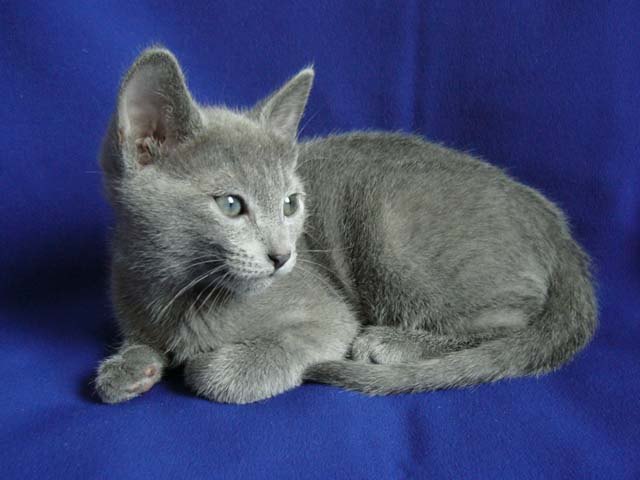
The Russian Blue Cat’s coat is its most distinctive characteristic, thanks to its solid blue color and the tips of the guard hairs coated in silver, giving it a shimmering effect. There should be no other color markings on the coat – however, some cats display a white locket on the throat (which disqualifies it from shows). Finally, this breed sports mauve footpads, completing its unique look.
Grooming Requirements
The Russian Blue is not a demanding breed when it comes to grooming. They have thick, short coats that don’t shed overly and are not prone to matting or tangling. To make sure those recognizable silver-blue hairs look lustrous and stay soft, brush or comb your pet at least once (ideally twice) a week. In the spring, when all cats shed more than usual as they discard that winter fluff, your Russian Blue will need more frequent brushing. This will help remove loose hair before it ends up all over your clothes and furniture. In addition to brushing, Russian Blue needs regular nail trimming and teeth brushing- no different than any other cat breed.
Photo credit: Kabir Bakie/Wikimedia; Flor de Azur/Wikimedia; Ras/Wikimedia

